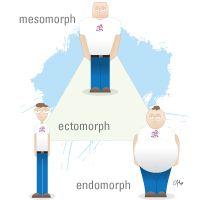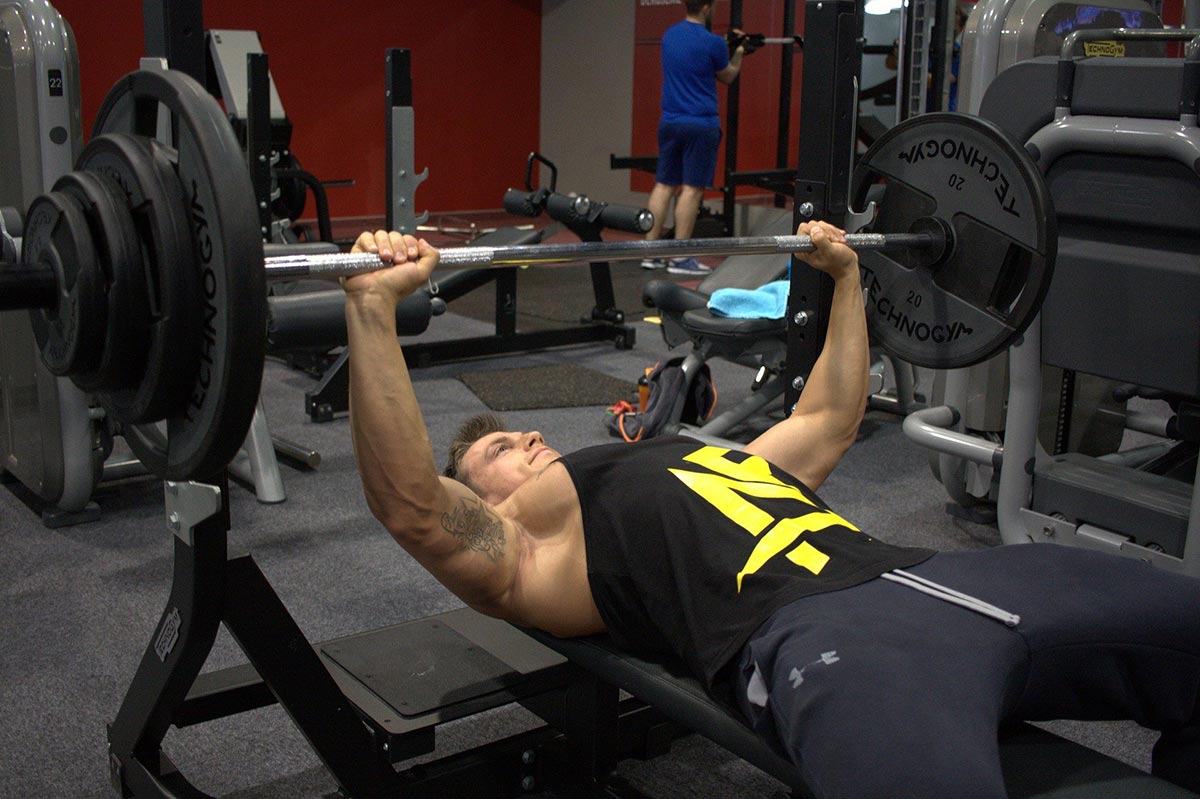Humans exhibit a fascinating variety of physical forms, which can be broadly categorized into three basic body types, also known as somatotypes. While most individuals possess characteristics of all three somatotypes, one type typically predominates. Understanding your dominant body type is crucial for optimizing your nutrition and training strategies to achieve the best possible results.
This knowledge allows you to tailor your approach to fitness and nutrition, maximizing your potential and achieving your desired physique more efficiently. It’s not about trying to change your inherent body type but rather working with it to achieve your personal goals.
Three Somatotypes: Ectomorph, Mesomorph, Endomorph
The three primary somatotypes are ectomorph, mesomorph, and endomorph. These classifications were derived from the work of psychologist William Sheldon (1898-1977), who studied the relationship between body types and temperament. Sheldon developed this system to categorize physiques for his research, drawing inspiration from the three layers of the human embryo: mesoderm, endoderm, and ectoderm.
These terms provide a framework for understanding the inherent tendencies of different body types and how they respond to training and nutrition. Recognizing these inherent tendencies is the first step in developing a personalized fitness plan.
The Ectomorph: The "Hard Gainer" Profile
The classic ectomorph is characterized by a thin, often fragile physique, with a light bone structure, long limbs, drooping shoulders, and minimal musculature. Ectomorphs are often described as "hard gainers" due to their difficulty in building muscle mass. However, they typically have less trouble managing body fat compared to other body types. Their facial features are often delicate and thin, with a head shape that tends to taper down to a smaller chin.
While gaining muscle can be a challenge, ectomorphs can achieve significant improvements with the right training and nutrition approach. Focusing on compound exercises, adequate calorie intake, and sufficient rest is crucial for stimulating muscle growth in ectomorphs.
The Mesomorph: The Naturally Athletic Build
The mesomorph is often considered the "ideal" body type, characterized by broad shoulders, a narrow waist, a square jawline, strong bones, and well-defined musculature. Mesomorphs generally find it relatively easy to gain muscle mass and strength. While they have a genetic predisposition for athleticism, mesomorphs can still gain fat if they lead a sedentary lifestyle and follow poor dietary habits.
However, with consistent exercise and proper nutrition, they can typically lose excess weight relatively easily. This natural advantage allows mesomorphs to achieve their fitness goals more efficiently, but it's still important to follow a structured training and nutrition plan to maximize their potential.
The Endomorph: The Challenge of Weight Management
The endomorph body type is characterized by a tendency to carry more body fat, often resulting in a round or pear-shaped physique, with weight typically concentrated in the abdominal area. Endomorphs often find it more challenging to lose weight compared to other body types. While they can gain muscle more easily than ectomorphs, they require a consistent and dedicated approach to diet and exercise to manage their body composition.
A combination of resistance training, cardiovascular exercise, and a well-structured diet is essential for endomorphs to achieve their fitness goals. Focusing on portion control, prioritizing whole foods, and managing calorie intake are key components of a successful weight management strategy for endomorphs.
Understanding Your Unique Blend: The Importance of Individual Variation
It's important to remember that most individuals are not purely one somatotype but rather a combination of all three. Sheldon's system used a scale of 1 to 7 to represent the degree to which an individual exhibits each somatotype. For example, someone might be classified as a 2-6-1, indicating a low ectomorphic value, a high mesomorphic value, and a very low endomorphic value. Understanding your unique blend of somatotypes is crucial for tailoring your training and nutrition strategies effectively.
This personalized approach allows you to address your specific strengths and weaknesses, maximizing your results and optimizing your overall fitness journey. This understanding allows for a much more nuanced and effective approach to training and nutrition.
Training and Nutrition Strategies for Each Somatotype
Ectomorphs should prioritize compound exercises, focus on progressive overload, and consume a calorie surplus with a higher carbohydrate intake to support muscle growth. They should also minimize cardio and prioritize rest and recovery. Mesomorphs benefit from a balanced approach to training, incorporating both strength and hypertrophy work. They generally respond well to a moderate calorie intake with a balanced macronutrient distribution.
Endomorphs should focus on a combination of resistance training and cardiovascular exercise to manage body fat and build muscle. They often benefit from a calorie deficit with a controlled carbohydrate intake and a higher protein intake. These strategies ensure a more effective and personalized approach to fitness.
No matter your body type, some universal principles apply: consistent weight training, proper warm-up, regular cardio, a clean and healthy diet, adequate protein intake, gradual intensity increase, sufficient hydration, and avoidance of harmful substances like alcohol and tobacco. Achieving significant fitness results requires dedication, discipline, and consistent effort. By embracing fitness as a lifestyle, you can reap the numerous physical and mental benefits, regardless of your somatotype.
1 Sheldon, W. H. (1940). The varieties of human physique: An introduction to constitutional psychology. Harper.













